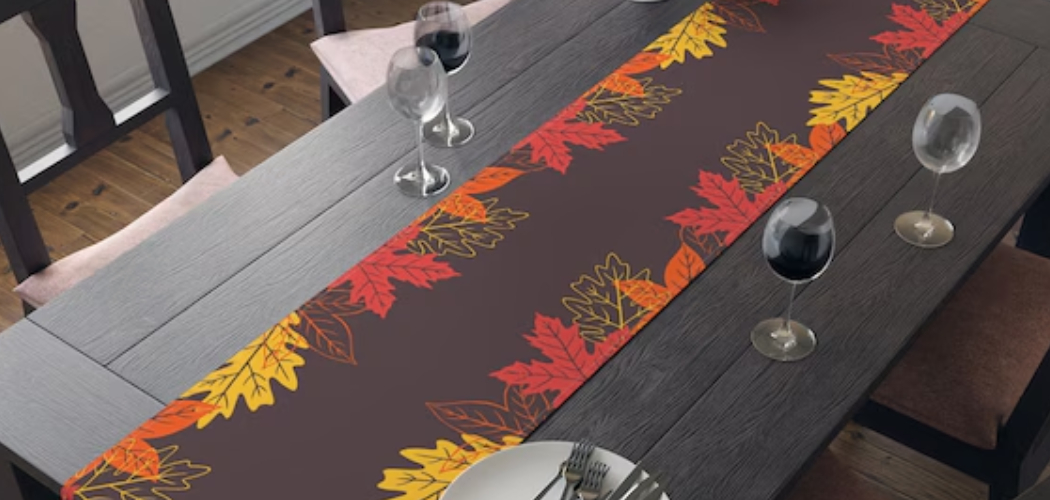Are you wondering how to style a table runner for your next dinner party? Look no further! Table runners are a simple yet elegant addition to any table setting and can be easily customized to match your personal style and the occasion.
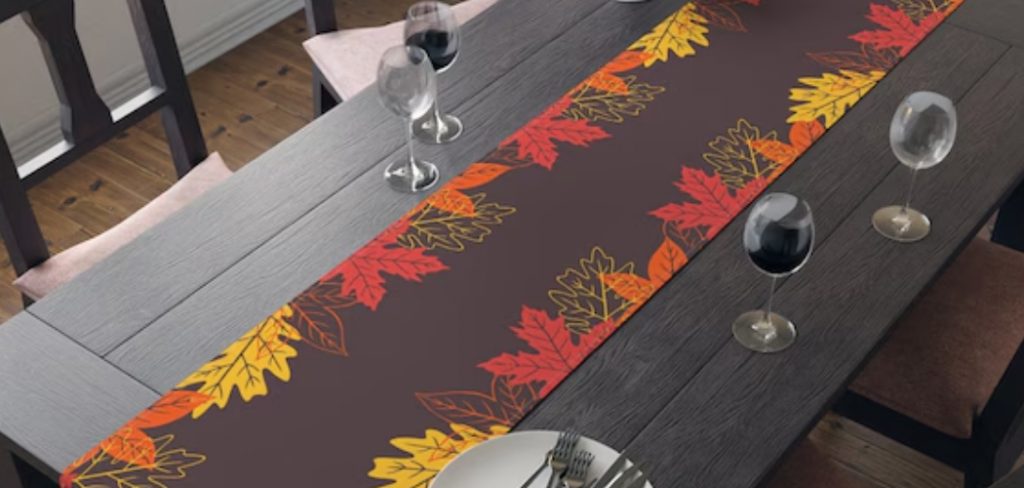
A table runner is a versatile and elegant addition to any table setting, instantly transforming the look and feel of your dining space. Whether you are preparing for a formal dinner party, a casual brunch, or simply updating your everyday decor, the right table runner can set the tone and enhance the overall aesthetic.
This guide will explore creative and practical ways of styling a table runner, helping you make the most of this decorative element. From choosing the right material and color to layering and accessorizing, you’ll learn how to achieve a perfectly styled table that impresses your guests and complements your personal style.
What Will You Need?
Before diving into the different ways to style a table runner, let’s review the items you will need for this project. The essential supplies include:
- Table Runner: This is the main piece to cover and decorate your table. Table runners come in various lengths, widths, and materials, so choose one that fits your table size and personal style. You can also opt for a DIY approach by making your own table runner using fabric or other materials.
- Tablecloth (optional): Depending on your preference, you can use a tablecloth as a base layer before adding the table runner. This can add dimension and texture to your table setting, as well as protect the table from spills or scratches.
- Tableware: Plates, cutlery, glassware, and any other utensils you will use for the meal should also be considered when styling a table runner. Consider how they will complement or contrast with the table runner in terms of color and design.
- Centerpiece (optional): A centerpiece can add a focal point and extra flair to your table setting. This can be anything from floral arrangements to candles or even a DIY creation. Just ensure it doesn’t obstruct the view or conversation between your guests.
- Napkins: Napkins are functional and a decorative element on the table. Choose napkins that coordinate with the color and style of your table runner for a cohesive look.
- Additional Decorations (optional): Depending on the occasion or your personal taste, you may want to add additional decorations such as place cards, name tags, or small trinkets to personalize your table setting even further.
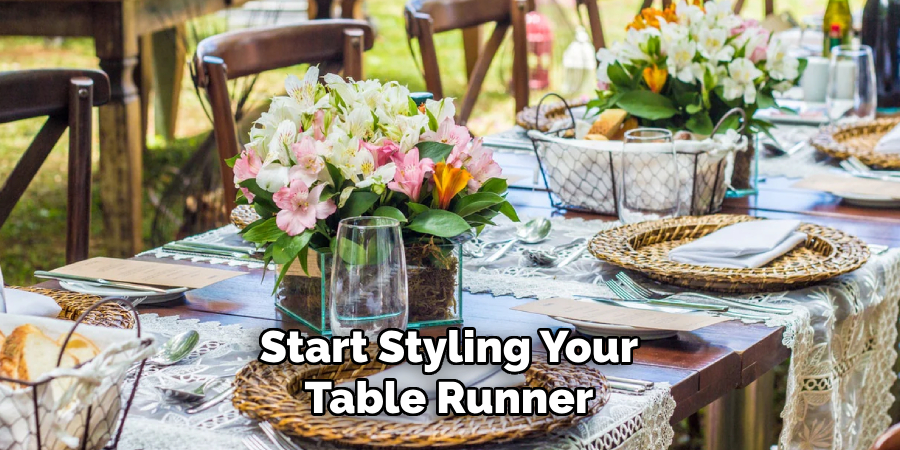
Once you have gathered all the necessary items, it’s time to get creative and start styling your table runner.
10 Easy Steps on How to Style a Table Runner
Step 1. Determine Your Table Runner Placement
Decide whether you’d like to place the table runner in the center of the table or along the edges. This choice sets the foundation for your overall design. A central placement is classic and formal, while a runner along the edges is more modern and casual.
Step 2. Choose Your Table Runner Material and Color
Before deciding on the design and pattern of your table runner, choose the material and color that best suits your occasion and personal style. You can opt for a solid color or a patterned fabric, such as stripes or floral prints. When picking a table runner, keep in mind the overall color scheme of your table setting.
Step 3: Layer with a Tablecloth
If you opt for using a tablecloth, layer it underneath the table runner for added texture and dimension. Make sure to choose a tablecloth color that complements or contrasts with the table runner while still fitting in with the overall aesthetic. A tablecloth can also protect your table from spills or scratches during the meal.
Step 4: Consider Your Tableware
The plates, cutlery, and glassware you use can greatly impact your overall table setting. Consider how they will coordinate with or complement the color and design of your table runner. For example, if you have a patterned table runner, opt for simple and understated tableware to avoid a cluttered look.
Step 5: Add a Centerpiece
A centerpiece can add an extra touch of elegance and personality to your table setting. It should be proportionate to the size of your table and not obstruct the view or conversation between guests. Use seasonal flowers, candles, or other decorative elements to create a beautiful centerpiece.
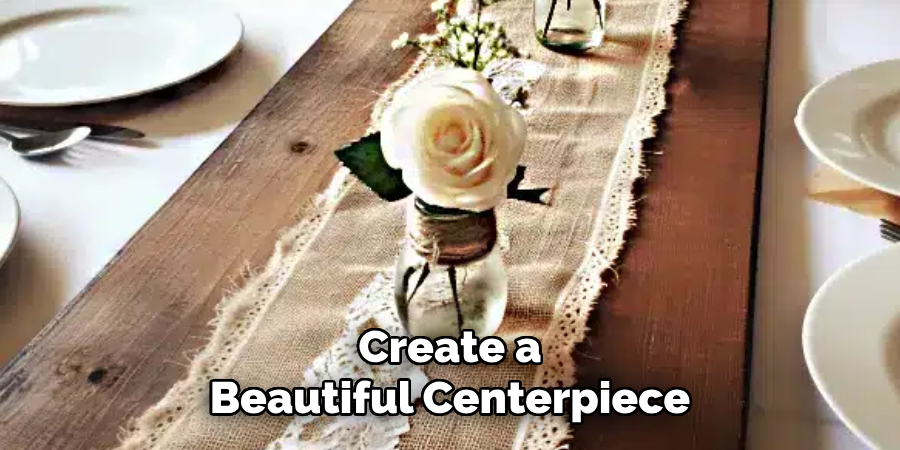
Step 6: Fold the Napkins
Napkins are an essential item on any table, and how you fold them can also add to the overall aesthetic. Choose a simple folding technique that complements your table runner design and place them next to or on the plates. You can add a napkin ring or tie them with a ribbon for an extra touch of elegance.
Step 7: Add Additional Decorations
To further personalize your table setting, consider adding small additional decorations that tie into the theme or occasion of your gathering. Place cards or name tags can be a practical and decorative element, helping guests find their seats while adding a bespoke touch.
You might also include small trinkets or favors that reflect the event’s theme, such as miniature pumpkins for a fall gathering or seashells for a beach-themed party. Another idea is to scatter a few seasonal items like pine cones, leaves, or flowers along the table runner to reinforce the decorative theme and bring a sense of cohesion to the overall design.
Step 8: Illuminate with Lighting
Lighting plays a crucial role in setting the mood of your table setting. Add candles, fairy lights, or small lanterns along the table runner to create a warm and inviting atmosphere. Ensure that any candles used are unscented to avoid competing with the aroma of your food. Battery-operated candles can be a safe alternative, providing the same ambiance without the risk of an open flame.
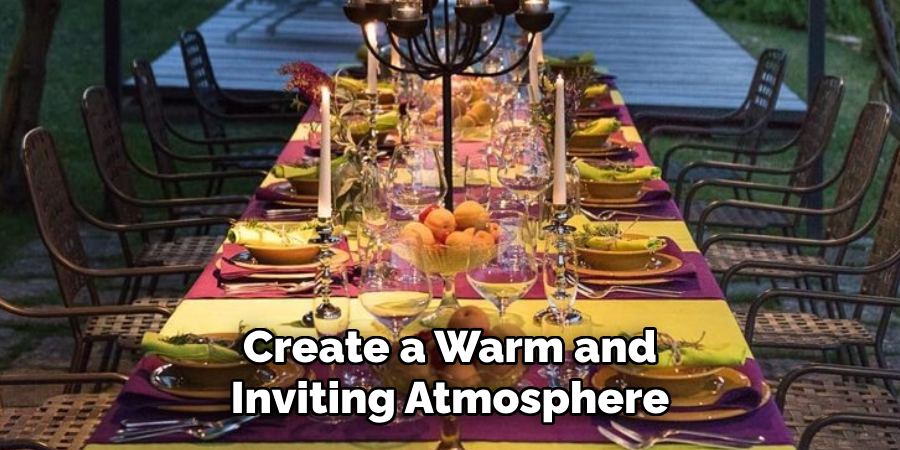
Step 9: Adjust for Practicality
While aesthetics are important, remember to consider the practicality of your table setting. Ensure that the table runner and any decorations do not impede the comfort and movement of your guests. This means leaving enough space for them to place and use their tableware comfortably. Avoid overcrowding the table with too many decorations, focusing instead on a few key pieces that make a statement.
Step 10: Review and Refine
Before your guests arrive, take a step back to review your table setting. Ensure that all elements are cohesive and balanced. Make any final adjustments, such as straightening the table runner, rearranging decorations, or re-folding napkins. Refining your setting will ensure that it looks polished and well thought out, leaving a lasting impression on your guests.
By following these 10 easy steps, you can create a beautiful and personalized table setting using a table runner. Remember to have fun and let your creativity shine through as you style your table for any occasion!
5 Additional Tips and Tricks
- Layering: Add depth and interest by layering your table runner with placemats or a complementary tablecloth. This creates a rich, textured look that can enhance the overall aesthetic of your table setting.
- Seasonal Themes: Adapt your table runner to fit the season. For instance, use a runner with autumnal colors and motifs for fall or a light, pastel runner during the spring. This seasonal touch can make your dining area feel more in tune with the time of year.
- Centerpiece Coordination: Ensure that your centerpiece coordinates well with your table runner. Whether it’s a floral arrangement, a collection of candles, or a decorative bowl, harmonizing these elements will create a cohesive and polished look.
- Accessorize with Tableware: Integrate your tableware into your runner’s design by choosing dishes, glasses, and cutlery that complement its color and style. This will tie the whole table setting together and make it feel more unified.
- Play with Length: Experiment with the length of your table runner. While most runners are designed to hang over the ends of the table, you could opt for a shorter runner that sits within the table’s edges for a more modern and clean-cut appearance.
5 Things You Should Avoid
- Ignoring the Table Size: Avoid using a table runner that is too long or too short for your table. Ensure the runner fits appropriately, either extending just past the edges or covering the length of the table as intended.
- Clashing Patterns: Avoid mixing patterns that clash. While combining patterns can be stylish, too many conflicting designs between the runner, tablecloth, and accessories can create a chaotic look.
- Overcrowding the Table: Do not overcrowd your table with excessive decorations. A table runner should enhance, not suffocate, the overall aesthetic. Make sure there is enough space for dishes and dining accessories.
- Neglecting Maintenance: Avoid using table runners that are difficult to clean or maintain. Choose materials that can be easily washed or are stain-resistant to keep your dining table looking pristine.
- Ignoring the Event’s Theme: Make sure the table runner is in harmony with the event’s theme or occasion. A runner that doesn’t align with the overall decor can look out of place and disrupt the visual flow of your setting.
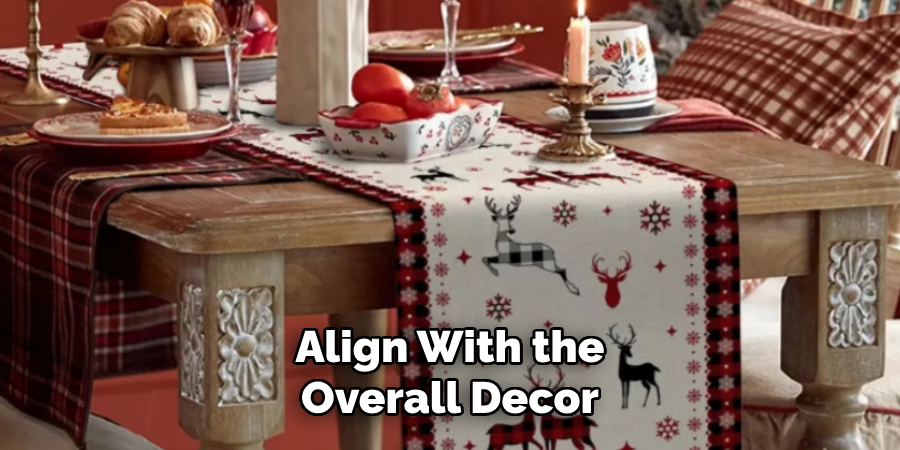
Conclusion
How to style a table runner effectively requires thoughtful consideration of a few key elements. By layering with placemats or complementary tablecloths, adhering to seasonal themes, and coordinating with centerpieces, you can create a sophisticated and harmonious dining experience.
Ensuring that your tableware complements the runner’s design and experimenting with different runner lengths can add a personal touch and modern flair. Equally important is to avoid common missteps like ignoring the table size, mixing clashing patterns, overcrowding the table, neglecting maintenance, and overlooking the event’s theme.
With these tips and tricks in mind, your table runner can transform any dining set into a beautifully curated space, perfect for any occasion.
